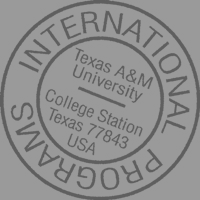Sharing Stories: Revealing Ourselves to Others
In Tell Me a Story: Narrative and Intelligence, Roger Schank points out that daily conversation is actually storytelling. Through conversation we share our experiences, both minor and significant, as we reveal a bit of ourselves to others. It is the sharing that is key to both good conversation and to meaningful digital storytelling.
Last Wednesday afternoon after a two-day fast paced digital storytelling workshop, twenty-eight teachers sat down to share their stories. It was a powerful personal experience to enter into the world of each teacher. If you would like to see their digital stories, they are now posted on the Worldroom web site.
The International Outreach Digital Storytelling Workshop for K-12 teachers was held on June 26 & 27 at the Brazos Valley Children’s Museum. K-12 teachers learned about the digital storytelling process, multiple technology methods for designing digital stories, and curriculum approaches to engaging students in digital storytelling. See the International Programs E-News to read about the workshop:
Last Wednesday afternoon after a two-day fast paced digital storytelling workshop, twenty-eight teachers sat down to share their stories. It was a powerful personal experience to enter into the world of each teacher. If you would like to see their digital stories, they are now posted on the Worldroom web site.
The International Outreach Digital Storytelling Workshop for K-12 teachers was held on June 26 & 27 at the Brazos Valley Children’s Museum. K-12 teachers learned about the digital storytelling process, multiple technology methods for designing digital stories, and curriculum approaches to engaging students in digital storytelling. See the International Programs E-News to read about the workshop:
http://international.tamu.edu/intradeptnewsletter.asp (see July 2)
During the workshop, Jamie Gustin, Elementary Technology Coach for Magnolia ISD demonstrated Movie Maker, Photo Story3 and Audacity. Dr. Ron Zellner from TAMU Department of Educational Technology, presented a live demonstration of VideoQue Pro (MAC. The completed story is called Emily’s Wild Adventure, a digital story written, illustrated, and narrated by third grader Ashton Hinton. Enjoy the adventure with Ashton!
After the workshop, several teachers inquired if similar programs that use green screen techniques are available for PC users. Dr. Zellner provided links to two programs: Visual Communicator by Adobe and Vlogit. Vlogit is very inexpensive compared to Visual Communicator, another plus is the program is easy to use. I spent the afternoon of July 4th totally absorbed in playing with the possibilities that Vlogit provides, and I’m heading out this afternoon to find fabric to make my own green screen. Being in the story just adds a bit of spontaneity to a digital story or to a pod cast interview.
For information on using green screen techniques, see the articles on Dr. Jason Ohler’s web site: Nome green screen storytelling project, 2007: How-to pictorial guide for green screen digital storytelling and Going green - using green screen and chroma key editing in digital storytelling.
Watch 4th grade student Hannah Davis tell The Fox Who Became a Better Person, a digital story posted on YouTube.
Hannah shares Native American Indian cultural values as she tells a story that uses animals as characters. What is the moral of her story?
During the workshop, Jamie Gustin, Elementary Technology Coach for Magnolia ISD demonstrated Movie Maker, Photo Story3 and Audacity. Dr. Ron Zellner from TAMU Department of Educational Technology, presented a live demonstration of VideoQue Pro (MAC. The completed story is called Emily’s Wild Adventure, a digital story written, illustrated, and narrated by third grader Ashton Hinton. Enjoy the adventure with Ashton!
After the workshop, several teachers inquired if similar programs that use green screen techniques are available for PC users. Dr. Zellner provided links to two programs: Visual Communicator by Adobe and Vlogit. Vlogit is very inexpensive compared to Visual Communicator, another plus is the program is easy to use. I spent the afternoon of July 4th totally absorbed in playing with the possibilities that Vlogit provides, and I’m heading out this afternoon to find fabric to make my own green screen. Being in the story just adds a bit of spontaneity to a digital story or to a pod cast interview.
For information on using green screen techniques, see the articles on Dr. Jason Ohler’s web site: Nome green screen storytelling project, 2007: How-to pictorial guide for green screen digital storytelling and Going green - using green screen and chroma key editing in digital storytelling.
Watch 4th grade student Hannah Davis tell The Fox Who Became a Better Person, a digital story posted on YouTube.
Hannah shares Native American Indian cultural values as she tells a story that uses animals as characters. What is the moral of her story?
